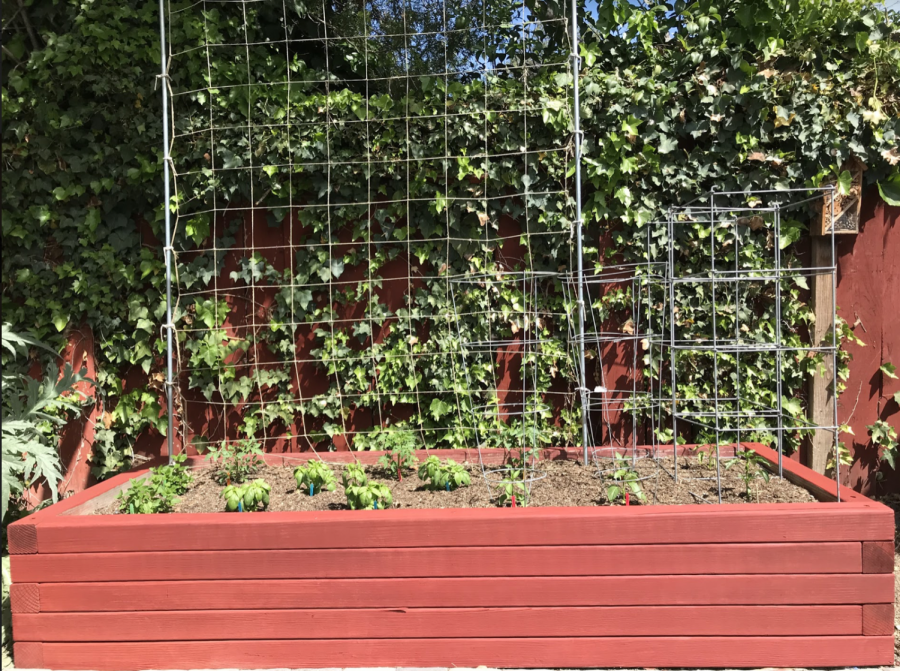A&E: A guide to spring gardening
A raised bed of seedlings with support cages and a trellis.
The sun is shining, the weather is warming and the birds are singing. Now that the last frost is behind us, it is just the right time of year to get outside and plant a vegetable garden.
Planting a garden is a cheap, healthy alternative to buying supermarket produce. It can be fun, relaxing and requires little skill. All that is needed is water, soil, a shovel and some consistent effort.
When starting a garden, the first thing to do is figure out where the plants will go. In a backyard, look for a sunny dirt patch a few feet across. If there is no ground space available, a potted garden or even an indoor garden are both viable options.
Next, decide what kind of plants to grow. Select tasty, utilizable vegetables that can grow with what the garden offers in terms of space and sunlight.
Tomatoes, carrots, peppers, beans, onions and even spinach are all good options for sunny gardens. If there is a lot of space, it is possible to plant larger vines like squash or watermelon, or even tall plants like corn.
Mid-size plants, specifically tomatoes and beans, will likely require a trellis – a wooden or wire frame that will help support the plant as it grows. Trellises can be bought for fairly cheap at the hardware store, or made at home by zip tying remesh between garden stakes to form a sort of ladder for the plant to climb on.
When it comes to planting in smaller spaces or planting indoors, look into herbs instead of vegetables. Herbs like basil, chives, mint, oregano, parsley, rosemary and thyme are all hardy and fairly simple to cultivate.
Herbs are easiest to grow when they are pre-sprouted: look for mini herb plants in soil at the local nursery or hardware store. Vegetables can be grown from seed or from seedling. Although seeds are extremely cheap, they are slightly more difficult to work with, and vegetables planted from seeds take longer to reach maturity.
At the hardware store, pick up some potting soil. Although not strictly necessary if planting directly in the ground, mixing potting soil with existing dirt will improve the quality of the soil.
When it comes to planting, a hand shovel, a watering can and some popsicle sticks is all that is necessary. Do not go overboard digging holes just yet – many seeds only need to be planted a half-inch or so below the surface.
If planting directly in the ground, outline rows according to the directions on the back of the seed packet, as every plant has its own planting instructions. Use the popsicle sticks to mark where in the garden seeds are planted so it is clear where to water.
If planting indoors, assemble a selection of medium to large plastic containers. Poke holes in the bottom for drainage, place them on a tray to catch drainage water and stray dirt, fill the containers with moist potting soil and plant according to the directions specific to the vegetables or herbs. Find a sunny spot by a window, and let the garden grow, watering regularly.
Finally, do more research. Individual plants have specific requirements when it comes to sunlight hours, temperature, planting season and watering, so make sure the garden offers everything a plant needs to grow before purchasing any seeds or seedlings. Harvests times also vary, so don’t expect all vegetables to ripen at the same time.
Most vegetables are not quick to grow, so be prepared to water the garden for a good few months before harvesting anything edible. But keep being patient, because the satisfaction of cultivating a personal little corner of the world and reaping the results is well worth the wait.


